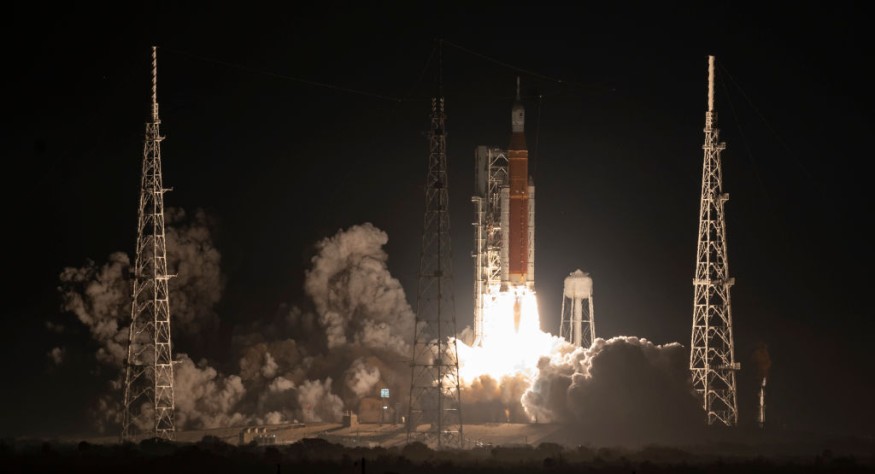During its first liftoff last week, NASA's powerful new moon rocket destroyed its launch pad and smashed elevator doors.
Although the mission was largely successful, NASA is attentively examining the damage left behind to prepare for future Artemis program flights, including the next one that will have people on board: Artemis 2, which is scheduled to orbit the moon no early than in 2024.
NASA Artemis 1 Orion Rocket Destroys Door
The manager of the Artemis I mission, Mike Sarafin, also gave an update on how the Space Launch System rocket was doing on Monday during a news conference in Houston.
According to Sarafin, the damage they did see mostly affected a few specific regions in both the NASA facility and the rocket.
"The environment is not the friendliest when you have the world's most powerful rocket lifting off," Sarafin said per Space.com.
A water suppression system was employed during the launch of Artemis 1 to lessen damage to the launching deck, just as the space shuttle before it. This system performed as intended. Nevertheless, Sarafin said that the sheer power of the liftoff caused the paint to peel off the launch tower deck of Artemis 1.
Less successful were the elevators for maintaining the launch tower. Pictures show twisted framing around at least one of the two lifts after the doors were torn off by the shock wave produced by the SLS.
He continued by saying that the elevator system is now not working. According to Sarafin, the pressure blew off the elevator doors on the rocket, and engineers need to put those back in operation.

ALSO READ : Could Humans Live on the Moon? NASA Believes People Would Be Living on the Lunar Surface by 2030
According to NASA officials, minor damage was caused to the pneumatic pipes supplying the enormous SLS tanks with gaseous nitrogen and helium. As a result, oxygen sensors on the pad misread low oxygen levels in the presence of the leaking gas.
Damages on Launch Pad
Futurism said the launch pad sustained far more damage than anticipated when NASA's Artemis 1 rocket eventually launched from Kennedy Space Center last week,
According to a source at the agency, the launchpad's damage "exceeded mission management's expectations," as Reuters space correspondent Joey Roulette tweeted. From his description, it seems quite bad.
Per source, the pad damage exceeded mission management’s expectations. Elevator blast doors were blown right off, various pipes were broken, some large sheets of metal left laying around. https://t.co/Z6P6OjxDQv
— Joey Roulette (@joroulette) November 18, 2022
"Elevator blast doors were blown right off, various pipes were broken, some large sheets of metal left laying around," the Reuters reporter quoted SpaceNews' Jeff Foust's post.
The post contained a summarized version of NASA's statement conceding that the launchpad's elevators weren't working.
A years-long stream of drama led up to the Artemis 1 flight. A cyclone damaged the ship right before launch, and the long-delayed creation of the Orbit Launch System propelled it into space.
Though they claim that there was "no additional risk" to the mission, NASA admits that debris was detected falling from the rocket shortly after the launch.
Despite those upbeat assertions, reporters discovered that NASA appeared quite keen for them to avoid taking pictures of the Artemis launch tower. Now that we have these early reports of how screwed up it looks to have become, we may see why.
RELATED ARTICLE : NASA's Artemis I Performs Lunar Flyby on the Sixth Day of Its Mission, Passing by Apollo Landing Sites
Check out more news and information on Space in Science Times.












